All Scientists
About Alumni
2025

Beau Rass
DePaul University – 2026
2025 DaRin Butz Intern in the Templer and Hutyra Labs
Beau Rass is a third-year undergraduate at DePaul University, majoring in Environmental Science with minors in Biology and Peace, Justice, and Conflict Studies. He is passionate about the complex relationships between human activity and environmental change. Outside of academics, Beau is deeply involved in environmental justice service initiatives and enjoys hiking, museums, and playing guitar. He will be working in the Templer/Hutyra Labs, studying air pollution in urban ecosystems.
Beau is currently an intern at the Environmental Law and Policy Center, the Midwest’s leading environmental legal advocacy organization.

Blake Califf
University of Tennessee, Knoxville – 2027
2025 DaRin Butz Intern in the Taylor Lab
Blake Califf is an undergraduate at the University of Tennessee studying Ecology and Evolutionary Biology. He has specific research interests in ecosystem responses and adaptation in the context of global change. Outside of academics, Blake likes to play soccer, go hiking, and fish. As a DaRin Butz intern, he will work in the Taylor Lab and plans on contributing to a better understanding of our biosphere by studying nutrient availability.
Currently, Blake is an undergraduate research assistant at the University of Tennessee.
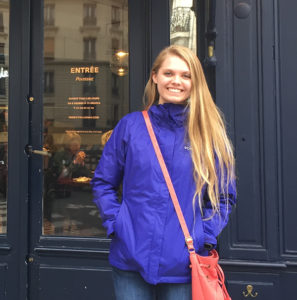
Bridget Bickner
Graduate Student, OEB, Hopkins Lab
Fellow of the Arnold Arboretum of Harvard University
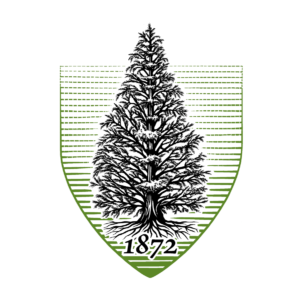
Carly Coughlin
Research Assistant, OEB, Hopkins Lab
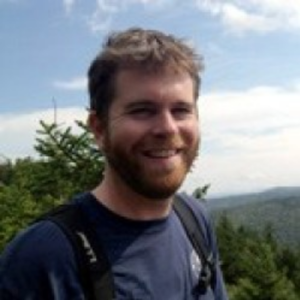
David Des Marais
Assistant Professor, MIT
Visiting Scholar, Arnold Arboretum of Harvard University
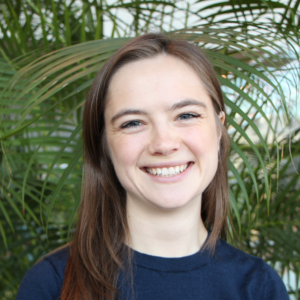
Grace Burgin
Graduate Student, MSO, Hopkins Lab
Fellow of the Arnold Arboretum of Harvard University
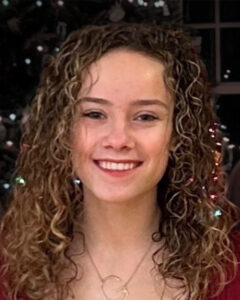
Grace Papetti
Hamilton College – 2027
2025 DaRin Butz Intern in the Friedman Lab
Grace Papetti is an undergraduate studying Biology with a minor in Geosciences at Hamilton College. She is passionate about ecology and collects seed data in the local glens on campus. In her free time, Grace enjoys baking, volunteering, and doing yoga. She is excited to work in the Friedman Lab this summer and is ready to continue exploring evolutionary biology.
Grace is currently an intern at the Hamilton College Arboretum, where she focuses on maintaining the Root Glen and Gardens.

Isha Saini
University of Michigan – Ann Arbor – 2026
2025 DaRin Butz Intern in the LaScaleia Lab
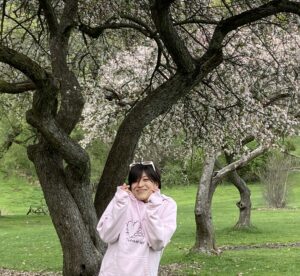
Izzy Acevedo
Research Assistant, OEB, Hopkins Lab

James Fortin
Research Assistant, Friedman Lab and Weld Hill Labs
Arnold Arboretum of Harvard University
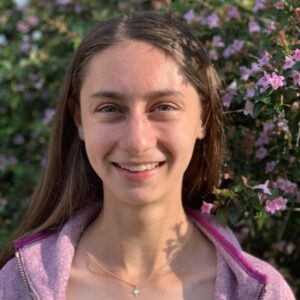
Jenna Coleman
Catawba College – 2027
2025 DaRin Butz Intern in the Taylor Lab
Jenna Coleman is a second-year undergraduate student at Catawba College, majoring in Environmental Sciences and Sustainability. Her interests include botany (especially native plant ecology) and environmental outreach (believing that people care about what they know about). Outside of academia, she loves crafts of all kinds and spending time outdoors— two hobbies that intersect in many ways! She is excited to explore climate impacts on plants in the Taylor Lab.
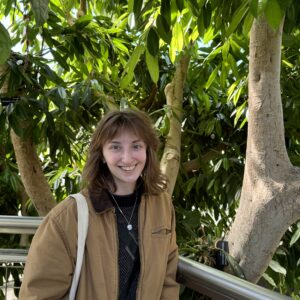
Katie McGillivray
University of Massachusetts, Amherst- 2026
2025 DaRin Butz Intern in the Kellogg and Gong Labs
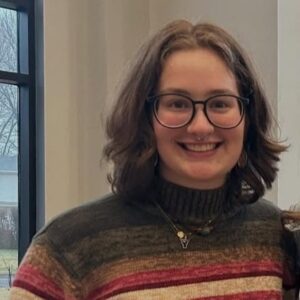
Maddie Jocek
Ohio University – 2026
2025 DaRin Butz Intern in the Friedman Lab
Maddie Jocek is entering her senior year at Ohio University where she is studying field ecology, with a minor in environmental geoscience. She is passionate about forestry, woody plants, conservation, and geology. She enjoys hiking in the Appalachia foothills of Ohio and loves to share fun facts about plants. She will be working in the Friedman lab studying woody plants.
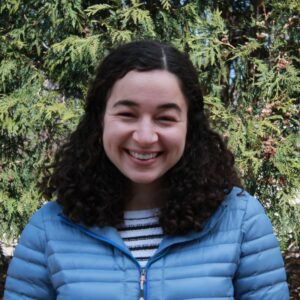
Megan Wilcots
Applied Climate Scientist, The Nature Conservancy
Visiting Scholar, Arnold Arboretum of Harvard University
Megan Wilcots was the first Global Change Fellow from the Arnold Arboretum, a position she held jointly with the HUCE as an Environmental Fellow. As a Visiting Scholar, Megan works with Professor Ben Taylor to study how Arctic heatwaves alter nitrogen fixation and carbon uptake.
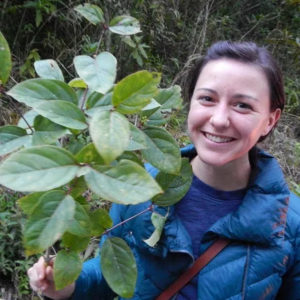
Morgan Moeglein
2021-2022 Putnam Fellow
Assistant Professor, Norwich University
Visiting Scholar, Arnold Arboretum of Harvard University

Olivia Thorgersen
College of Marin – 2025
2025 DaRin Butz Intern in the LaScaleia Lab

Patricia Álvarez Granados
Master’s Student, Consejo Superior de Investigaciones Científicas (CSIC), Spain
Visiting Fellow, Arnold Arboretum of Harvard University
2025 Deland Award
Patricia Álvarez Granados explores how having extra sets of chromosomes—a condition called polyploidy—affects how trees like Magnolias produce and move sugars through their tissues. Known as non-structural carbohydrates (NSCs), these sugars are made in the leaves and transported to other parts of the plant, and this process may be more efficient in polyploid trees due to larger vascular cells. Patricia aims to learn if trees with different ploidy levels store and move sugars differently, which could help them survive in stressful environments. By studying Magnolias at the Arboretum, she hopes to uncover how genetics influence tree growth and resilience.

Will Johnson
University of Georgia- 2026
2025 DaRin Butz Intern in the Kellogg and Gong Labs
Will is a third-year undergraduate student at the University of Georgia majoring in applied biotechnology with an emphasis in plant science and minoring in plant biology. He has a strong interest in plant morphology, evolutionary biology, and the genetic mechanisms underlying both. Will grows and collects over 100 tropical plants in his apartment which drives his curiosity and passion for plants. In his free time, Will enjoys hiking, painting, and making ceramics. He is excited to work with Dr. Kellog and Dr. Gong to explore flower morphology and learn observational techniques.
Will is currently an undergraduate research assistant at the University of Georgia.
2024

Aditi Panda
National Institute of Science Education and Research (NISER), India – 2025
2024 DaRin Butz Intern in the Friedman Lab
Aditi Panda is an undergraduate majoring in Life Sciences at the National Institute of Science Education and Research (NISER), India. Her research interests encompass ecology, phylogeny and evolutionary development of angiosperms. She plans to pursue her love for plants in the future as a graduate student. She aspires to work in the tropical forests of South and Southeast Asia and explore their eco-evolutionary dynamics.
Following the internship and graduation, Aditi joined as a short-term fellow at the Smithsonian Tropical Research Institute in Panama. She will be starting as a PhD student at the University of Birmingham in February 2026.
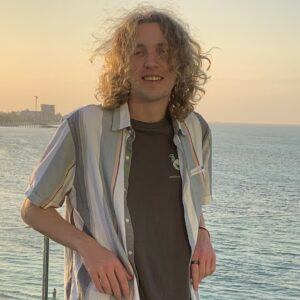
Aidan Jones
University of Vermont – 2026
2024 DaRin Butz Intern in the Kellogg Lab
Aidan Jones is an undergraduate student at the University of Vermont studying molecular genetics. He is originally from northern New Jersey where he grew up skateboarding. He became interested in plant genetics and molecular cell biology during his undergraduate studies and hopes to pursue either in graduate school. As a DaRin Butz intern, he will be working in the Kellogg lab.
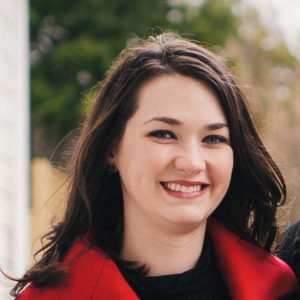
Andrea Berardi
Research Associate, OEB, Hopkins Lab
Fellow of the Arnold Arboretum of Harvard University

Andrew Cameron
Research Assistant, OEB, Hopkins Lab
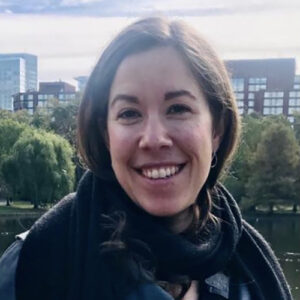
Anna Feller
Swiss National Science Foundation Postdoctoral Fellow, OEB, Hopkins Lab
Fellow of the Arnold Arboretum of Harvard University
Anushka Bhagwat
undergraduate student, Northeastern University, Hopkins Lab
Anya Ghai
undergraduate student, Northeastern University, Hopkins Lab
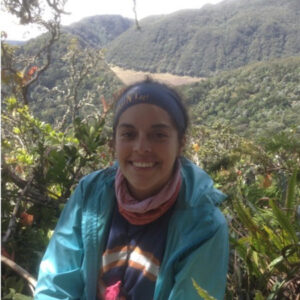
Cecilia (Ceci) Prada Cordero
Postdoctoral Fellow, OEB, Taylor Lab
Fellow of the Arnold Arboretum of Harvard University
Cecilia Prada Cordero is a postdoctoral fellow in the Taylor Lab. Ceci focuses on the influence of abiotic and biotic factors on tree species composition, distribution, and biogeochemical processes, with a specific emphasis on filling research gaps in soil-plant-fungi interactions in tropical forests.
Cheng-Chiang Wu
Assistant Professor, Framingham State University
Visiting Fellow, Arnold Arboretum of Harvard University
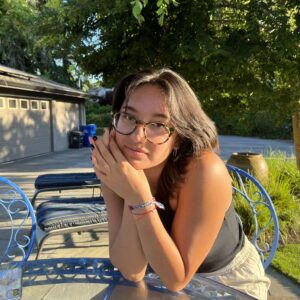
Eva-Sophia Swaddipong
Haverford College – 2026
2024 DaRin Butz Intern in the Hopkins Lab
Irene Ren
undergraduate student, Northeastern University, Hopkins Lab
Isabella Cao
Undergraduate student, Harvard College, Taylor Lab
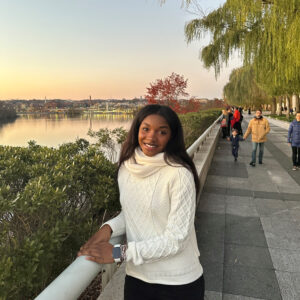
Jazmine Harry
Howard University – 2026
2024 DaRin Butz Intern in the Hopkins Lab
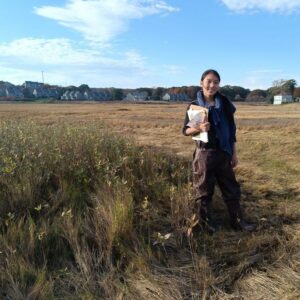
Jiarong (Lotus) Carlson
University of Massachusetts, Amherst – 2025
2024 DaRin Butz Intern in the Templer Lab
Luke Zehr
postgraduate student, Taylor Lab
Michael Fairley
Undergraduate student, Harvard College, Taylor Lab
Michael Fairly
undergraduate student, Harvard College, Taylor lab

Oscar de la Torre
University of Georgia – 2026
2024 DaRin Butz Intern in the Taylor Lab
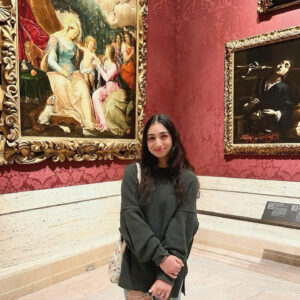
Serene Omran
University of Massachusetts, Amherst – 2025
2024 DaRin Butz Intern in the Kellogg Lab
Serene Omran is an undergraduate student at UMass Amherst studying Biology and Environmental Science. She is passionate about plant biology and loves gardening, baking, and hiking! As someone interested in how cereal crops are impacted by climate change, she is excited to study the evolutionary biology of cereal crops in the Kellogg lab this summer.
Serene is a PhD student in Plant Biology at Penn State University.
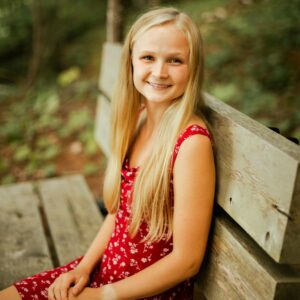
Tori Bacall
Bowdoin College – 2026
2024 DaRin Butz Intern in the Taylor Lab
Tori Bacall is an undergraduate student at Bowdoin College majoring in biology and environment studies. Outside of class, she enjoys running track and cross country and exploring the Maine outdoors. She is passionate about conducting research that guides environmental conservation, especially in the context of climate change. As a DaRin Butz intern, she will work in the Taylor lab researching how climate change impacts relationships between plants and soil microbes.
2023

Angelique Acevedo
Cornell University – 2023
2023 DaRin Butz Intern in the Villouta Lab
Angelique Acevedo is a senior from Cornell University majoring in Environment & Sustainability with minors in Plant Science and Microbial Science. After graduation, she plans to take a gap year working as a Lab Technician studying plant anatomy before potentially applying to graduate school. As a DaRin Butz intern, she will work in the Villouta lab investigating how woody species physiologically adapt to survive freezing temperatures.
Currently Angelique is research technician and lab manager in the Onyenedum Lab at NYU.

Austin Garner
Graduate Student, OEB, Hopkins Lab
Fellow of the Arnold Arboretum of Harvard University
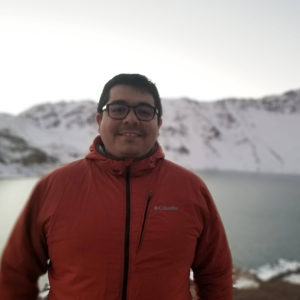
Camilo Villouta
2021-2023 Putnam Fellow
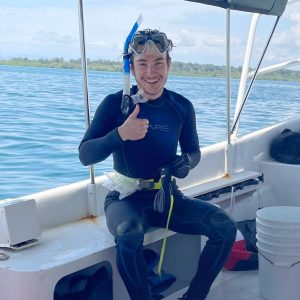
Daniel Pinckney
Harvard College – 2024
2023 DaRin Butz Intern in the Templer and Hutyra Labs
Daniel Pinckney is an undergraduate at Harvard College studying Environmental Science and Public Policy. He has been fascinated by the outdoors for as long as he can remember and loves hiking, gardening, and biking. An avid environmentalist and urbanist, he is excited to investigate nutrient flows in urban ecosystems with the Templer and Hutyra labs this summer.
Daniel is currently a Public Policy Researcher at ICF.
Ellie Mendelson
Research Assistant, Friedman and Weld Hill Labs
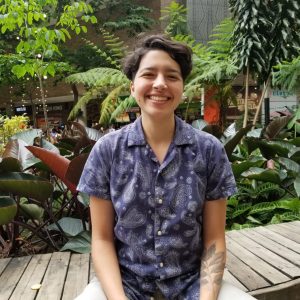
Estefania Elejalde Baena
University of Antioquia, Colombia – 2023
2023 DaRin Butz Intern in the Friedman Lab
Estefania Elejalde Baena is an undergraduate Biology student at the University of Antioquia, Colombia. She is interested in the evolution of floral attributes that have a direct impact on the reproductive success of the plant and that have promoted the fascinating evolution and radiation of Angiosperms, such as floral color. Estefania is currently developing her undergraduate thesis, working with a unique parasite-host system found in the Colombian Eastern Cordillera.
Estefania is currently working on her Master’s degree in the Pabon Lab at the University of Antioquia, Colombia
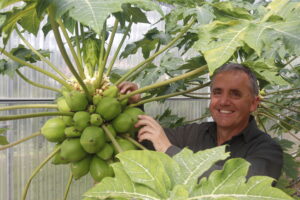
Iñaki Hormaza
Research Professor, La Mayora Experimental Station, Spain
Visiting Scholar, Arnold Arboretum of Harvard University
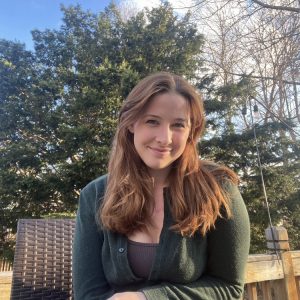
Kathryn Vanden Hoek
University of Missouri, Columbia – 2024
2023 DaRin Butz Intern in the Taylor Lab
Kathryn Vanden Hoek is a junior undergraduate student from the University of Missouri – Columbia studying biochemistry. She is passionate about the environment and is interested in how ecosystems are responding to climate change. In the Taylor lab, she will study how plants respond to and influence their environments, particularly in view of global change.
Staring Fall 2024, Kathryn is a PhD student in Environmental Engineering at Northwestern University.
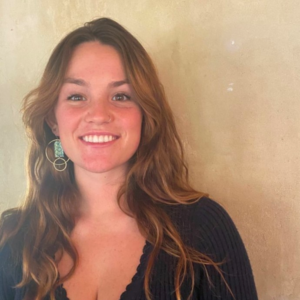
Lauren Church
Research Assistant, OEB, Taylor Lab
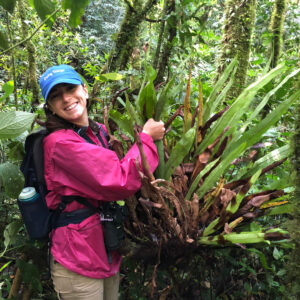
Lindsay McCulloch
NOAA Climate and Global Change Postdoctoral Fellow
Fellow of the Arnold Arboretum of Harvard University
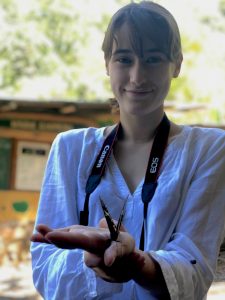
Maya Akazawa
Oberlin College – 2025
2023 DaRin Butz Intern in the Taylor Lab
Maya Akazawa is an undergraduate student at Oberlin College studying Biology. She grew up in Vermont where she became fascinated with moths and plants, and they became the subjects of many mixed media collage and drawings. As a DaRin Butz intern in the Taylor lab, she will be researching how plants respond to and influence their environments. After college she plans to pursue a career in Ecology.
Maya is currently working as a lab technician at the University of South Carolina is Columbia S.C. in the Eric LoPresti Lab. She is digitizing their historic collection of Moths (which is around 30,000 specimens from South Carolina!).

Megan Wilcots
2023 Global Change Fellow
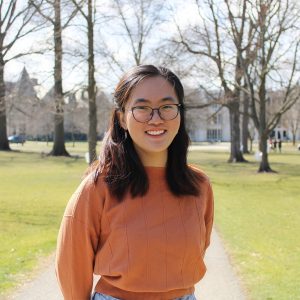
My Trinh
Oberlin College – 2025
2023 DaRin Butz Intern in the Friedman Lab
My Trinh (she/her) is a student at Oberlin College studying Biology and Biochemistry. Having grown up in Vietnam, this plant enthusiast enjoys gardening, painting, drinking coffee, and playing guitar. In the Friedman lab, My will study the evolutionary diversification of plants through structure and development. After graduation, My wishes to pursue a research career in botany or molecular biology. She is excited to be in Boston for the first time.
My is a graduate student in the Friedman Lab at the Arnold Arboretum starting Fall 2024.
Rohan Prabhu
undergraduate student, Hopkins lab
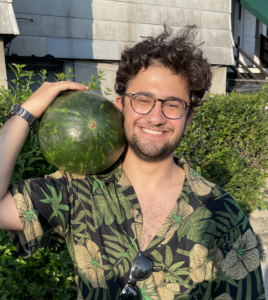
Yusuf Yildirim
Harvard College – 2025
2023 DaRin Butz Intern in the Hopkins Lab
2022
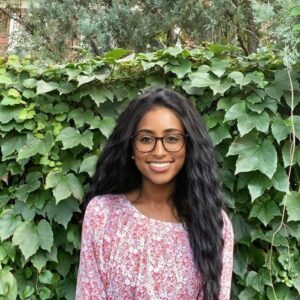
Alexandria Pete
Graduate Student, OEB, Friedman and Kramer Labs
Angie Diana
Research Assistant, OEB, Hopkins Lab

Antonio Serrato-Capuchina
Postdoctoral Fellow, OEB, Hopkins Lab
Fellow of the Arnold Arboretum of Harvard University

Ben Goulet-Scott
Graduate Student, OEB, Hopkins Lab
Fellow of the Arnold Arboretum of Harvard University

Ben Tibbetts
Case Western Reserve University – 2025
2022 DaRin Butz Intern in the Taylor Lab
Ben Tibbetts is an undergraduate student studying Biology at Case Western Reserve University. He is a violinist, plant lover, and particularly interested in the relationship between organisms and their environment. As a DaRin Butz intern he will be working in the Taylor lab investigating the effects of climate change on plants, as well as how plants can influence their surroundings in return.
Ben was an Alumni Mentor for 2023 Intern My Trinh.
Ben is currently a research assistant in the Shrestha Lab at Mass Eye & Ear/Harvard Medical School.
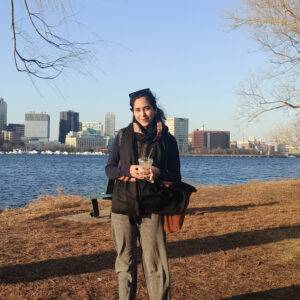
Bushra Shahid
MEME Student, OEB, Hopkins Lab
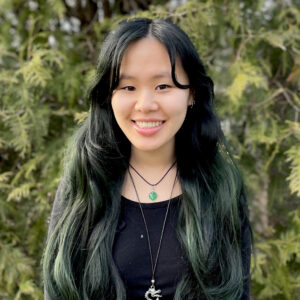
Cameron Chin
University of Massachusetts, Amherst – 2023
2022 DaRin Butz Intern in the Templer and Hutyra Labs
Cameron Chin (she/her) is a junior undergraduate at UMass Amherst studying environmental science and plant & soil science. Growing up in Boston, she’s enjoyed visiting the urban wilds and local parks to sketch the landscape and wildlife. She plans to go to graduate school to study plant/ microbe interactions under global change factors to work within the sphere of conservation. As an intern in the Templer/ Hutyra labs, she will be researching nutrient cycling in urban soil systems.
Cameron hosted an 2023 Intern Event painting wood cookies sourced from the Arboretum.
After working as a research technician in the Templer Lab at Boston University, Cameron started a Masters in Forest Resources at the University of Maine.
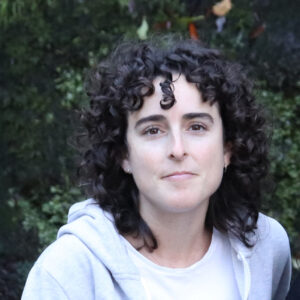
Cristina Ferrer Blanco
PhD Student, IHSM La Mayora in Spain
Visiting Fellow, Arnold Arboretum of Harvard University

Daniel Buonaiuto
Graduate Student, OEB, Wolkovich and Holbrook Labs
Fellow of the Arnold Arboretum of Harvard University
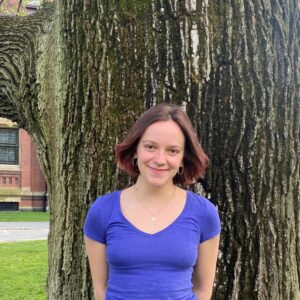
Eden Fisher
Harvard College – 2025
2022 DaRin Butz Intern in the Friedman Lab
Eden Fisher is an undergraduate at Harvard College interested in studying math, plants, rocks, public health, or some combination of the above. She grew up in Rhode Island and likes to spend as much of her time outside as possible. In the Friedman lab, Eden will explore the connections between developmental, phylogenetic, and evolutionary biology.
Eden hosted a scavenger hunt for the 2023 Interns.
Currently, Eden is working on her Masters of Education at Harvard Graduate School of Education — and working once a week at Harvard Forest with the Taylor Lab.
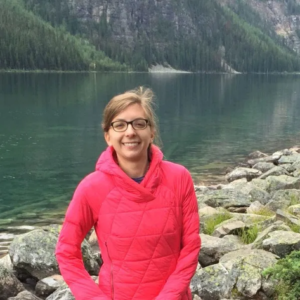
Elizabeth Spriggs
2017-2019 Putnam Fellow
Visiting Scientist of the Arnold Arboretum
- Spriggs EL*, Fertakos ME. 2021. Evolution of Castanea in North America: restriction-site-associated DNA sequencing and ecological modeling reveal a history of radiation, range shifts, and disease. American Journal of Botany 108: 1692-704. Abstract

Emily Lancaster
University of Michigan – 2023
2022 DaRin Butz Intern in the Villouta Lab
Emily Lancaster is an undergraduate student at the University of Michigan studying plant biology. She is interested in plant adaptations and the affects of climate change on forest communities. As a DaRin Butz intern, Emily will be working in the Villouta lab investigating winter physiology in plants.
Emily is currently a PhD Student at Purdue University studying plant biology studying how plants adapt to survive winter and focusing on the process of cold acclimation.

Jacob Suissa
Graduate Student, OEB, Friedman Lab
Fellow of the Arnold Arboretum of Harvard University
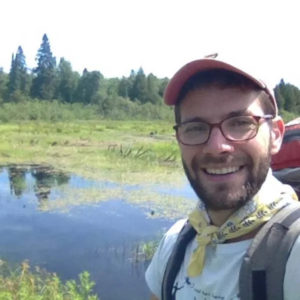
Jake Grossman
2018-2020 Putnam Fellow
- Grossman JJ*. 2023. Phenological physiology: seasonal patterns of plant stress tolerance in a changing climate. New Phytologist 237: 1
- Grossman JJ*. 2021. Evidence of constrained divergence and conservatism in climatic niches of the temperate Maples (Acer L.). Forests 12(5): 535. Abstract
- Kovaleski AP*, Grossman JJ*. 2021. Standardization of electrolyte leakage data and a novel liquid nitrogen control improve measurements of cold hardiness in woody tissue. Plant Methods 17: 53. (APK and JJG contributed equally) Abstract

James Fortin
Williams College – 2022.5
2022 DaRin Butz Intern in the Friedman Lab
James Fortin grew up north of Boston and enjoys gardening, fishing, and exploring. He is currently pursuing a Biology major at Williams College. After graduation, he plans to do fieldwork in evolutionary biology or ecology. In the Friedman lab, James will study plant morphologies in the context of evolutionary diversification. He appreciated this opportunity to write about himself in the third person.
James was a research assistant for the Friedman Lab and for Faye Rosin in the WH Labs.
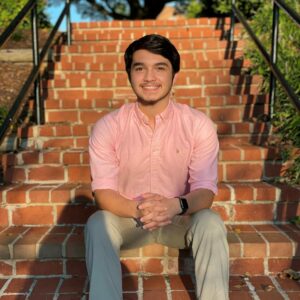
Joshua Murphy
The George Washington University – 2025
2022 DaRin Butz Intern in the Hopkins Lab
Joshua Murphy is an undergraduate student at The George Washington University studying Biology. He is interested in plant genetics and ethnobotany. As a DaRin Butz intern, he will be working in the Hopkins lab researching adaptation and speciation in the Texas wildflower Phlox.
Marwa Abdelal
Postgraduate Student, Northeastern University

Morgan Moeglein
2021-2022 Putnam Fellow
Assistant Professor, Norwich University
Visiting Scholar, Arnold Arboretum of Harvard University
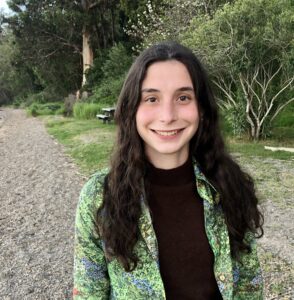
Olivia Bronzo-Munich
Bowdoin College – 2023
2022 DaRin Butz Intern in the Hopkins Lab
Olivia Bronzo-Munich is an undergraduate student at Bowdoin College studying Biology. She is interested in plant-insect interactions and their role in plant and insect adaptation, speciation, and diversification. As a DaRin Butz intern, she will be working in the Hopkins lab researching adaptation and speciation in the wildflower Phlox.
- Burgin GA, Bronzo-Munich O, Garner AG, Acevedo IA, Hopkins R. 2023. Characterizing each step of pollination in Phlox drummondii reveals a single butterfly species predominates the pollinator assemblage. American Journal of Botany. Abstract
Wendy Clement
Associate Professor, College of New Jersey
Visiting Scholar, Arnold Arboretum of Harvard University
Wenying Liao
Postdoctoral Fellow, OEB, Taylor Lab
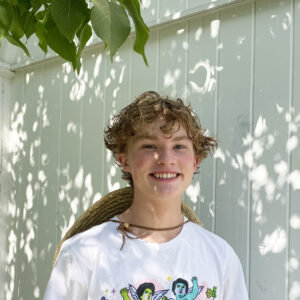
William Huntley
William Huntley
2022 DaRin Butz Intern in the Moeglein Lab
2021
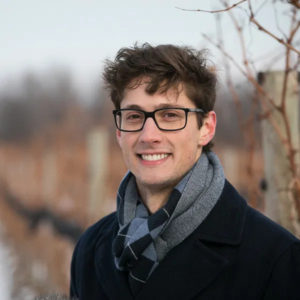
Al Kovaleski
2019-2021 Putnam Fellow
- North MG, Kovaleski AP*. 2024. Time to budbreak is not enough: cold hardiness evaluation is necessary in dormancy and spring phenology studies. Annals of Botany. 133(2):217–24. Abstract
- Kovaleski AP*. 2022. Woody species do not differ in dormancy progression: Differences in time to budbreak due to forcing and cold hardiness. Proceedings of the National Academy of Sciences 119: e2112250119. Abstract
- Kovaleski AP*, Grossman JJ*. 2021. Standardization of electrolyte leakage data and a novel liquid nitrogen control improve measurements of cold hardiness in woody tissue. Plant Methods 17: 53. (APK and JJG contributed equally) Abstract
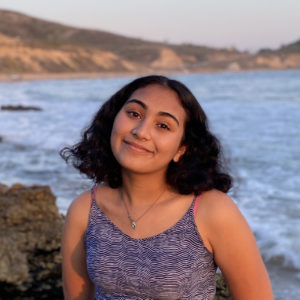
Aunnesha Bhowmick
University of California, Berkeley – 2024
2021 DaRin Butz Intern in the Taylor Lab
Aunnesha Bhowmick is an undergraduate student at University of California, Berkeley, studying Molecular Environmental Biology. She is passionate about climate change research especially through the lens of ecosystem ecology and biogeochemistry. As a DaRin Butz intern, she is excited to work in the Taylor lab where she is analyzing remote sensing data to better understand the effects of climate change in the Arctic biome.
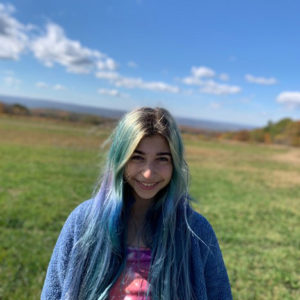
Bee Mace
Cornell University – 2023
2021 DaRin Butz Intern in the Kovaleski Lab
Bee Mace is an undergraduate student at the College of Agriculture and Life Sciences at Cornell University studying Plant Science and Climate Change. She is interested in tree physiology, native landscape conservation, and the ecology of natural and cultivated woody landscapes.
Bee is now working on a MS in Environmental Engineering at Northeastern University in Boston. Her research focuses on salt marsh soil health and bioremediation.
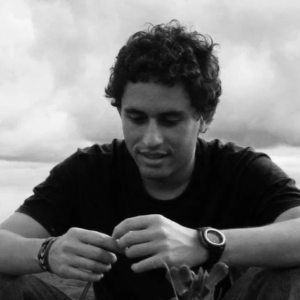
Caio Guilherme Pereira
Postdoctoral Fellow, MIT
Visiting Fellow, Arnold Arboretum of Harvard University
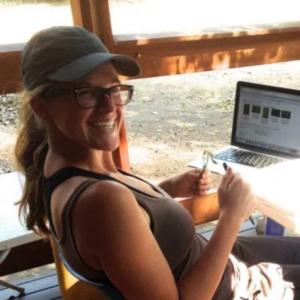
Catherine Chamberlain
Graduate Student, OEB, Wolkovich and Holbrook Labs
Fellow of the Arnold Arboretum of Harvard University
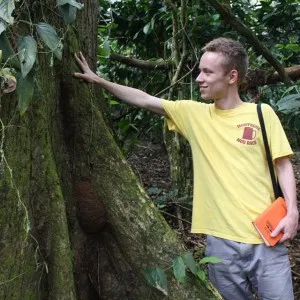
Charlie Hale

Dylan Dubay
Goucher College – 2022
2021 DaRin Butz Intern in the Grossman Lab
Dylan is an undergraduate student at Goucher College studying Biology. He is interested in investigating adaptive genetic variance in hardwood trees and understanding forest ecology. As a Darin Butz Intern, he is working in the Grossman lab analyzing the potential effects of climate change on the Maple (Acer) genus.
Dylan hosted a 2022 Intern Event on conifer identification.
After returning to the Arboretum as a Hunnewell Curation Intern, Dylan is now a Science and Collections Information Specialist at Coastal Maine Botanic Gardens.
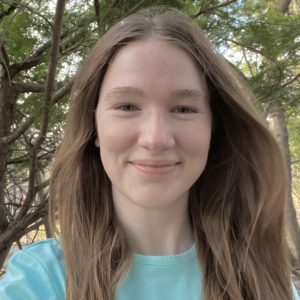
Erica Kirchhof
Cornell University – 2022
2021 DaRin Butz Intern in the Kovaleski Lab
Erica Kirchhof is an undergraduate at Cornell University studying plant sciences with minors in climate change and inequality studies. She is interested in understanding the relationships between plants and the environment through the lens of physiology, ecosystem interactions, and global change. As a DaRin Butz intern, Erica is working in the Kovaleski lab to explore the winter physiology of woody plants in the Arboretum’s living collections.
Erica was an Alumni Mentor for 2022 Interns, Ben Tibbetts and Joshua Murphy. She hosted a 2023 Intern Event on tackling the elevator pitch.
Erica is currently a PhD student in the Kovaleski lab at the University of Wisconsin, Madison

Jerry Gonzalez-Cantoral
University of San Carlos of Guatemala – 2021
2021 DaRin Butz Intern in the Moeglein Lab
Jerry González-Cantoral is studying biology at University of San Carlos of Guatemala. His main research is focused on the influence of soil physicochemical properties on secondary metabolites secretion in flowers of the devil’s hand tree (Chiranthodendron pentadactylon). As a DaRin Butz intern, he is working in the Moeglein lab exploring the complexities of leaf formation strategies and bud dormancy.
Jerry was an Alumni Mentor for 2022 Interns Eden Fisher and William Huntley.
After working for a company called “Special Fruits and Vegetables” , Jerry is now a Professor of Plant Physiology at the University of San Carlos, Guatemala.
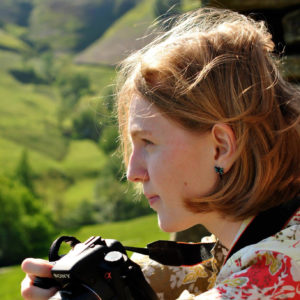
Kristel Schoonderwoerd
Graduate Student, OEB, Friedman Lab
Fellow of the Arnold Arboretum of Harvard University
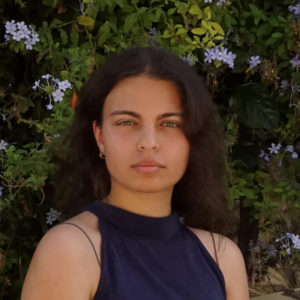
Millicent Harding
Durham University, United Kingdom – 2021
2021 DaRin Butz Intern in the Taylor Lab
Millie studied Physical Geography at Durham University in the UK. Her research focused on land management techniques in the UK and the improvement of Payment for Ecosystem Services schemes in agriculture through interviews, choice and crop modelling. In the Taylor lab, she is working on spatial analysis of warming in the Arctic using remote sensing data
Millie was an Alumni Mentor for 2023 Intern Daniel Pinckney. She hosted a 2022 Intern Event on overseas graduate programs..
Millie is currently a PhD student at Durham University, UK working on understanding how the treeline is changing under climate change across the Fennoscandian Arctic using techniques from remote sensing, modelling, and ecology.
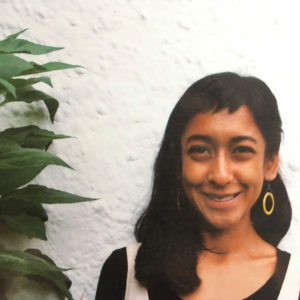
Nidhi Vinod
Eastern Mennonite University – 2020
2021 DaRin Butz Intern in the Grossman Lab
As a Darin Butz intern, Nidhi Vinod will examine the impact of climate change on Maples (Acer genus) in the Grossman lab.
Nidhi was an Alumni Mentor for 2022 Interns Olivia Bronzo-Munich and Cameron Chin, and 2023 Interns Kathryn Vanden Hoek and Angelique Acevedo.
Starting in the Fall of 2021, Nidhi is a PhD student at UCLA in the laboratory of Lawren Sack.

Samridhi Chaturvedi
Postdoctoral Fellow, OEB, Hopkins Lab
Fellow of the Arnold Arboretum of Harvard University
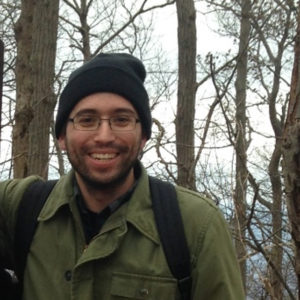
Steve Gougherty
PhD Student, Boston University
2019 Deland Award
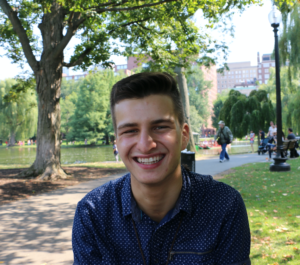
Yanni Pappas
Northeastern University – 2022
2021 DaRin Butz Intern in the Templer Lab
- Conrad-Rooney E, Gewirtzman J, Pappas Y, Pasquarella VJ, Hutyra LR, Templer PH. 2023. Atmospheric wet deposition in urban and suburban sites across the United States. Atmospheric Environment. 305:119783 Abstract
2020

Amelia Keyser-Gibson
Research Assistant, Friedman and Weld Hill Labs
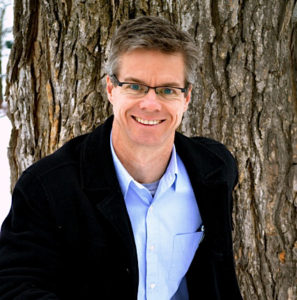
Barry Logan
Professor and Associate Dean of Bowdoin College
Visiting Scholar, Arnold Arboretum of Harvard University.

Jake Grossman
2018-2020 Putnam Fellow
- Grossman JJ*. 2023. Phenological physiology: seasonal patterns of plant stress tolerance in a changing climate. New Phytologist 237: 1
- Grossman JJ*. 2021. Evidence of constrained divergence and conservatism in climatic niches of the temperate Maples (Acer L.). Forests 12(5): 535. Abstract
- Kovaleski AP*, Grossman JJ*. 2021. Standardization of electrolyte leakage data and a novel liquid nitrogen control improve measurements of cold hardiness in woody tissue. Plant Methods 17: 53. (APK and JJG contributed equally) Abstract
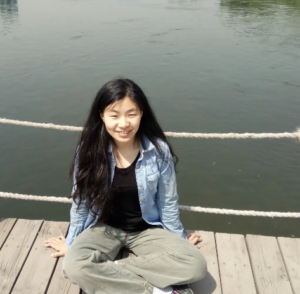
Jie Yun
Graduate Student, MIT
Visiting Fellow, Arnold Arboretum of Harvard University
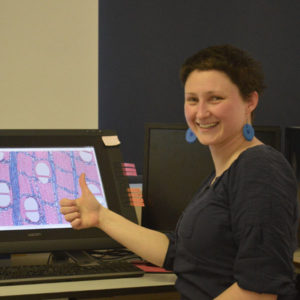
Kasia Zieminska
2016-2018 Putnam Fellow
- Ziemińska K*. 2023. The role of imperforate tracheary elements and narrow vessels in wood capacitance of angiosperm trees. IAWA Journal 1(aop):1–14. Abstract
- Ziemińska K*, Rosa E, Gleason SM, Holbrook NM. Wood day capacitance is related to water content, wood density, and anatomy across 30 temperate tree species. Plant Cell Environ. 43: 3048– 3067.
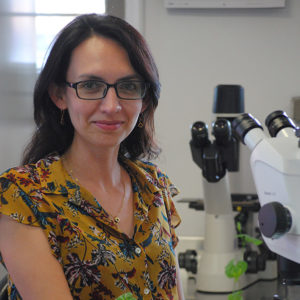
Natalia Pabón-Mora
Associate Professor, University of Antioquia in Colombia
Visiting Scholar, Arnold Arboretum of Harvard University
2018 Jewett Prize
- Suárez-Baron H, Alzate JF, Ambrose BA, Pelaz S, González F, Pabón-Mora N. 2023. Comparative morphoanatomy and transcriptomic analyses reveal key factors controlling floral trichome development in Aristolochia (Aristolochiaceae). Journal of Experimental Botany74(21):6588–6607. Abstract
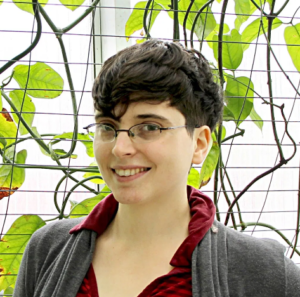
Rebecca Povilus
Postdoctoral Fellow, MIT
Visiting Fellow, Arnold Arboretum of Harvard University
Wayne Daly
Postgraduate student, Wolkovich Lab
2019

Adam Roddy
Post-doctoral fellow, Yale University
Visiting Fellow, Arnold Arboretum of Harvard University
2016 Jewett Prize
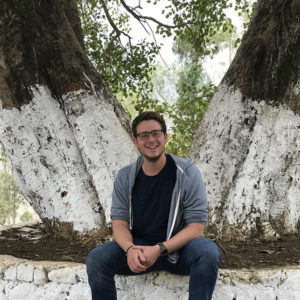
Daniel Mindich
Harvard College – 2022
2019 DaRin Butz Intern in the Friedman Lab
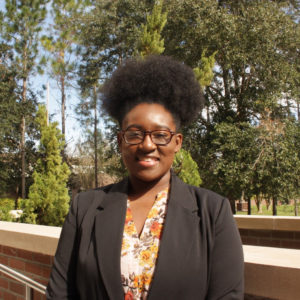
Dannielle Waugh
University of Central Florida – 2020
2019 DaRin Butz Intern in the Spriggs Lab
Dannielle Waugh is an undergraduate at the University of Central Florida, currently obtaining her bachelor’s degree in Biology with a minor in Environmental Sciences. At her home institution, her research focuses on observing the role of plant growth rate in relation to leaf traits and environmental characteristics. Some of her interests are ecology, plant-environment interactions, invasive biology, and conservation. As a DaRin Butz intern, she is working in the Spriggs lab studying the evolution and plant conservation of the chestnuts and ashes (Castanea and Fraxinus).

Elizabeth Spriggs
2017-2019 Putnam Fellow
Visiting Scientist of the Arnold Arboretum
- Spriggs EL*, Fertakos ME. 2021. Evolution of Castanea in North America: restriction-site-associated DNA sequencing and ecological modeling reveal a history of radiation, range shifts, and disease. American Journal of Botany 108: 1692-704. Abstract
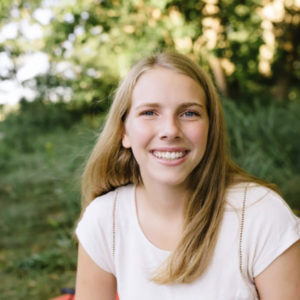
Emma O’Donnell
University of Massachusetts, Amherst – 2021
2019 DaRin Butz Intern in the Hopkins Lab
Emma O’Donnell is an undergraduate student at UMass Amherst, majoring in biology. She currently studies plant regulatory genomics in the model organism grass species Brachypodium distachyon. She’s involved in analyzing how specific genetic mutations affect the secondary cell wall of these plants. As a DaRin Butz intern, she is working in the Hopkins lab.
Emma (O’Donnell) McGee is currently a scientist at Blueprint Medicines.
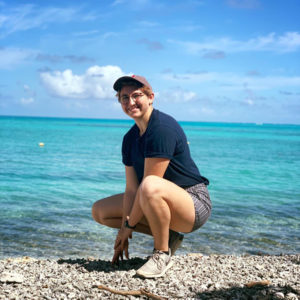
Erin Wright
Harvard College – 2021
2019 DaRin Butz Intern in the Holbrook Lab
Erin Wright is an undergraduate at Harvard College. As a DaRin Butz intern, she is working in the Holbrook lab.
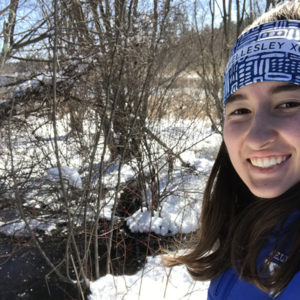
Fiona Harrigian
Wellesley College – 2020
2019 DaRin Butz Intern in the Templer & Hutyra Labs
Fiona Harrigian is an undergraduate student at Wellesley College studying Biology. She is interested in public health, microbiology, the environment, and the connections between them. As a DaRin Butz intern, she is exploring the connections between urbanization and plants and soils in the Templer and Hutyra labs.

Franchesco Molina
Graduate Student, OEB, Hopkins Lab
Fellow of the Arnold Arboretum of Harvard University
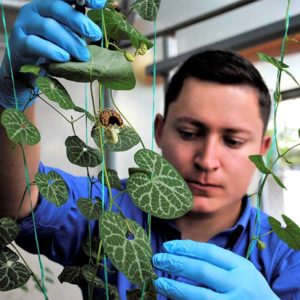
Harold Suarez Baron
PhD Candidate, University of Antioquia in Colombia
Visiting Fellow, Arnold Arboretum of Harvard University
2018 Deland Award
- Suárez-Baron H, Alzate JF, Ambrose BA, Pelaz S, González F, Pabón-Mora N. 2023. Comparative morphoanatomy and transcriptomic analyses reveal key factors controlling floral trichome development in Aristolochia (Aristolochiaceae). Journal of Experimental Botany74(21):6588–6607. Abstract

Henry Coe
Oberlin College – 2020
2019 DaRin Butz Intern in the Grossman Lab
- Grossman JJ, Coe HB, Fey O, Fraser N, Salaam M, et al. Temperate woody species across the angiosperm phylogeny acquire tolerance to water deficit stress during the growing season. New Phytologist. Abstract
Henry North
Graduate Student, OEB, Hopkins Lab
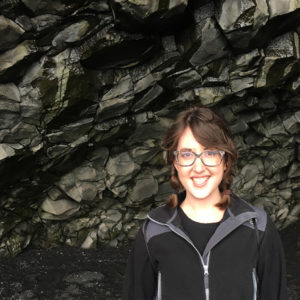
Julia Marrs
Graduate Student, Boston University
Visiting Fellow, Arnold Arboretum of Harvard University
Laura Clerx
Research Assistant, Friedman Lab
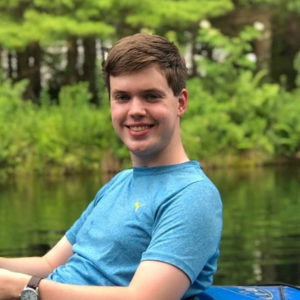
Liam Cleary
University of Massachusetts, Amherst – 2020
2019 DaRin Butz Intern in the Friedman Lab
Liam Cleary is an undergraduate student at UMass Amherst studying plant and soil science. His current research focuses on the evolutionary relationship between flowering plants and their pollinators. Liam is working in the Friedman lab studying Magnolia macrophylla’s relationship with honey bee pollinators.
Liam was an Alumni Mentor for 2021 Interns Dylan Dubay and Yanni Pappas and for 2023 Intern Maya Akazawa.
After working as a research assistant at BTI/Cornell University, Liam is a PhD student at Clark University (starting Fall 2022) studying population genomics of Basidiobolus.
Matt Farnitano
Research Assistant, OEB, Hopkins Lab

Mayerlin Fischbach Barria
University of Central Florida – 2020
2019 DaRin Butz Intern in the Des Marais Lab
Mayerlin Fischbach Barria is an undergraduate student at the University of Central Florida, studying biology with a focus on plant science. Her major interests include understanding ecosystem resilience as well as plant-environment interactions, which she is working on this summer in the Des Marais lab.
Mayer was an Alumni Mentor for 2021 Intern Nidhi Vinod and hosted a 2021 event on making an elevator pitch.
Mayer received her Master of Science from the University of Hohenheim in Berlin Germany on Environmental Protection and Agricultural Food Production.
Shayla Salzman
Graduate Student, OEB, Hopkins and Pierce Labs
Fellow of the Arnold Arboretum of Harvard University
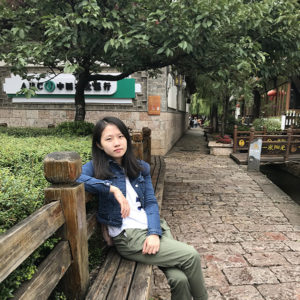
Yiling Fang
Oberlin College – 2020
2019 DaRin Butz Intern in the Holbrook Lab
2018
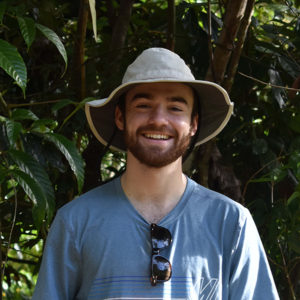
Andrew Walter-McNeill
Bowdoin College – 2019
2018 DaRin Butz Intern in the Des Marais Lab
Andrew Walter-McNeill is a undergraduate at Bowdoin College studying biology and computer science. He helped investigate how certain crops respond to changes in their growth environment (especially those related to climate change) in the Des Marais lab. He spent his spring semester studying the boundary between eucalypt forest and rainforest in northern Queensland.
Andrew is currently a Research Assistant in the Axel lab, a neuroscience lab at Columbia University.
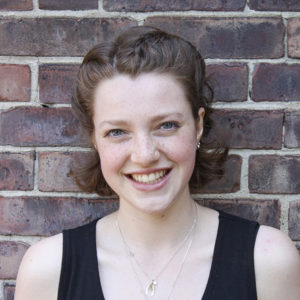
Anna Blaustein
Bowdoin College – 2019
2018 DaRin Butz Intern in the Des Marais Lab
Anna Blaustein was an undergraduate student at Bowdoin College where she studied Biology and Earth and Oceanographic Science. Anna worked in the Des Marais lab investigating how CO2 levels affect resource allocation in cereal grain-like grasses.
After graduating from the Graduate Program in Science Writing at MIT, Anna is a freelance Science Journalist and Communications Consultant, a Senior Consultant at the DOE Loan Programs Office, and a Fellow at the Clean Energy Leadership Institute.
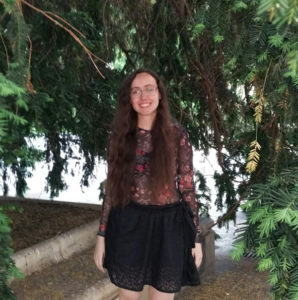
Anny Garcés Palacio
Universidad de Antioquia, Colombia – 2019
2018 DaRin Butz Intern in the Friedman Lab
Anny Garcés Palacio is from Colombia at Antioquia University. She is interested in Evo-Devo plants, evolutionary biology, organismic and embryology. Anny worked in the Friedman lab exploring the process of double fertilization in Conifers.
Anny was an Alumni Mentor for 2022 Interns Emily Lancaster and James Fortin and 2023 Interns Estefania Elejalde Baena and Yusuf Yildirim.
Starting in the Fall of 2022, Anny is a PhD student in Germany in the CEPLAS cluster.
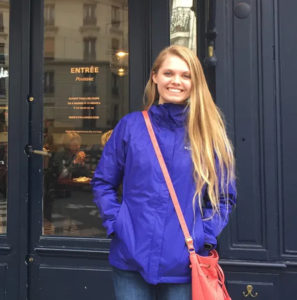
Bridget Bickner
University of Nebraska, Lincoln – 2018
2018 DaRin Butz Intern in the Hopkins Lab
Bridget Bickner studied biology at the University of Nebraska-Lincoln, where her research focused on the evolutionary implications of sexual conflict and mating strategies in spiders. In the future, she plans to focus on microevolutionary processes. As a DaRin Butz intern and under an American Society of Plant Biologists fellowship, Bridget worked in the Hopkins lab to locate cis-regulatory promoter mutations related to Phlox drummondii flower color variation.
Bridget was an Alumni Mentor for 2021 Interns Erica Kirchhof and Millie Harding. She hosted a 2023 Intern Event painting succulent plant containers.
Since Fall 2019, Bridget is a PhD Student in Organismic and Evolutionary Biology at Harvard University in the Hopkins lab.

Derek Schneider
Amherst College – 2020
2018 DaRin Butz Intern in the Hopkins Lab
Derek Schneider is a biology major at Amherst College. As a DaRin Butz intern, he studied speciation in plants in the Hopkins lab.
Diana Bernal
Postdoctoral Fellow, Northeastern University
Visiting Fellow, OEB, Hopkins Lab
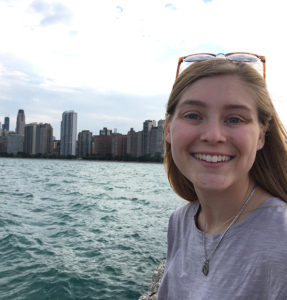
Emily Brown
Boston University – 2019
2018 DaRin Butz Intern in the Zieminska Lab
Emily Brown, an undergraduate student at Boston University, studied Biology with a minor in Anthropology. She worked on the project “Tree Anatomy and Function” in the Zieminska lab.
Emily is a research data coordinator in the Cardiology Department at Boston Children’s Hospital.
Federico Roda
Postdoctoral Fellow, OEB, Hopkins Lab
Fellow of the Arnold Arboretum of Harvard University
Heather Briggs
Postdoctoral Fellow, OEB, Hopkins Lab
Fellow of the Arnold Arboretum of Harvard University
Isabelle Chuine
CNRS Research Director, Centre d’Ecologie Fonctionnelle & Evolutive
Bullard Fellow, Harvard Forest
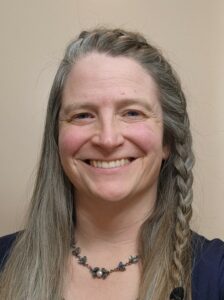
Jessica Savage
2014-2016 Putnam Fellow
Associate Professor, University of Minnesota, Duluth
Visiting Scholar, Arnold Arboretum of Harvard University
2017 Sinnott Award
2023 Jewett Prize
- Savage JA, Kiecker T, McMann N, Park D, Rothendler M, Mosher K. 2022. Leaf out time correlates with wood anatomy across large geographic scales and within local communities. New Phytologist 235: 953-64. Abstract
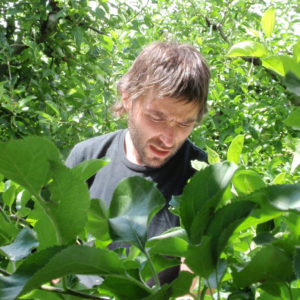
Juan M. Losada
Postdoctoral Fellow, Friedman, Holbrook, and Leslie Labs

Kasia Zieminska
2016-2018 Putnam Fellow
- Ziemińska K*. 2023. The role of imperforate tracheary elements and narrow vessels in wood capacitance of angiosperm trees. IAWA Journal 1(aop):1–14. Abstract
- Ziemińska K*, Rosa E, Gleason SM, Holbrook NM. Wood day capacitance is related to water content, wood density, and anatomy across 30 temperate tree species. Plant Cell Environ. 43: 3048– 3067.
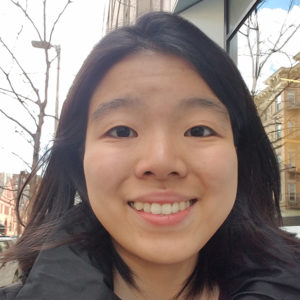
Marissa Lee
Boston University – 2019
2018 DaRin Butz Intern in the Templer and Hutyra Labs
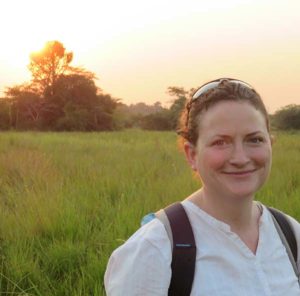
Marjorie Lundgren
Postdoctoral Fellow, MIT
Visiting Fellow, Arnold Arboretum of Harvard University
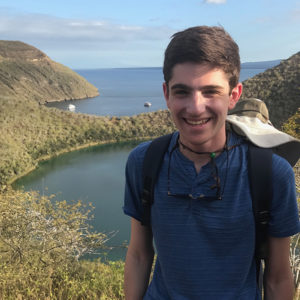
Matthew Fertakos
The College of New Jersey – 2019
2018 DaRin Butz Intern in the Spriggs Lab
Matt Fertakos is an undergraduate studying biology at The College of New Jersey. His major interests include ecology, evolution, and conservation. Matt worked in the Spriggs lab studying evolution and plant conservation of the severely threatened chestnut and ash trees.
Matt hosted an event for the 2022 Interns.
Matt was awarded the 2019 Undergraduate Research Prize by the American Society of Plant Taxonomists for this research. Since summer of 2021, Matt is a PhD student in Organismic and Evolutionary Biology at UMass Amherst.
- Spriggs EL, Fertakos ME. 2021. Evolution of Castanea in North America: restriction-site-associated DNA sequencing and ecological modeling reveal a history of radiation, range shifts, and disease. American Journal of Botany 108: 1692-704.
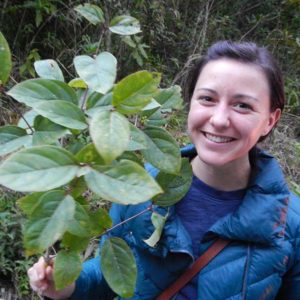
Morgan Moeglein
Graduate Student, Yale University
Visiting Fellow, Arnold Arboretum of Harvard University
Sevan Suni
Postdoctoral Fellow, OEB, Hopkins Lab
Fellow of the Arnold Arboretum of Harvard University
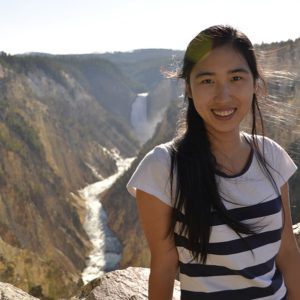
Zhe He
Wheaton College – 2018
2018 DaRin Butz Intern in the Holbrook Lab
Zhe He is a recent graduate from Wheaton College with a chemistry major and biology minor. Zhe worked in the Holbrook lab to help characterize vascular xylem vulnerability to cavitation. In the Walhout lab at Wheaton, she studied the diffusion of rhodamine b in polyelectrolyte solutions.
Since Fall 2019, Zhe is a PhD Student in Organismic and Evolutionary Biology at Harvard University in the Holbrook lab.
2017
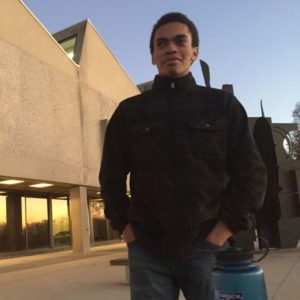
Asa Peters
Connecticut College – 2019
2017 DaRin Butz Intern in the Wolkovich Lab
Asa Peters from Newton, Massachusetts was a student at Connecticut College studying botany and music technology. He is interested in botany, ecology, and also ethnobotany. Asa worked in the Wolkovich lab.
Asa started a MS program, Critical Ethnic and Community Studies, at UMass Boston in the Fall of 2020.

Ashley Bang
Brown University – 2019
2017 DaRin Butz Intern in the Templer and Hutyra Labs
Ashley Bang was an undergraduate at Brown University studying Geology-Biology. She worked on the ‘Air Pollutions in Urban Ecosystems’ project in the Templer and Hutyra labs. Originally from Hong Kong, Ashley is interested in studying the shift in ecosystem interactions and functions that have been caused by anthropogenic activities.
Ashley was awarded a Fulbright scholarship for marine conservation & ecology research in Taiwan in the Fall of 2019. Currently, Ashley is a Principal Consultant with The Biodiversity Consultancy / University of Oxford.
- Hundertmark WJ, Lee M, Smith IA, Bang AHY, Chen V, Gately C, Templer PH, Hutyra LR. 2021. Influence of landscape management practices on urban greenhouse gas budgets. Carbon Balance Management.
Callin Switzer
Graduate Student, OEB, Hopkins Lab
Fellow of the Arnold Arboretum of Harvard University

David Des Marais
Research Associate, OEB
Senior Fellow of the Arnold Arboretum of Harvard University

Elizabeth Wolkovich
Associate Professor, University of British Columbia, Canada
Visiting Scholar, OEB, Harvard University
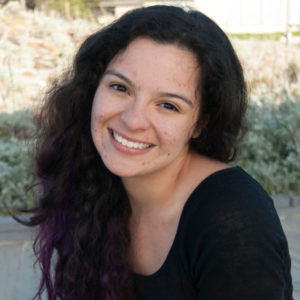
Emily Rosa
Sonoma State University – 2018
2017 DaRin Butz Intern in the Zieminska Lab
Emily Rosa is from Northern California and was an undergraduate at Sonoma State University in Environmental Studies and Planning with minors in Biology and Geography. Emily worked in the Zieminska lab.
Emily was an Alumni Mentor for 2021 Intern Bea Mace.
Emily is the Natural Resource Manager at the Travis Air Force Base.
- Ziemińska K, Rosa E, Gleason SM, Holbrook NM. Wood day capacitance is related to water content, wood density, and anatomy across 30 temperate tree species. Plant Cell & Environment 43: 3048– 3067.
Ignacio Morales-Castilla
Research Associate, OEB, Wolkovich Lab
Fellow of the Arnold Arboretum of Harvard University
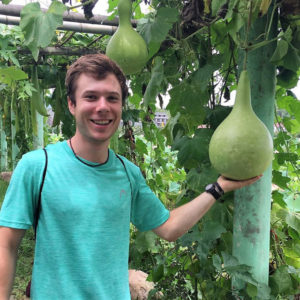
Jack Smith
Harvard University – 2019
2017 DaRin Butz Intern in the Friedman Lab

Jack Smith
Harvard University – 2019
2017 DaRin Butz Intern in the Friedman Lab

Jessica Leslie
UMass, Amherst – 2017
2017 DaRin Butz Intern in the Hopkins Lab
Jessica Leslie is a graduate from UMass Amherst, where she was a Biology major with a certificate in Civic Engagement and Public Service. She is interested in plant-insect interactions, plant adaptations, and plant speciation. Jessica worked in the Hopkins lab.
Jessica is a PhD student at the University of California, Berkley in the Molecular and Cell Biology program starting in Fall 2019.
Johan Arango
Master's Student, Harvard Extension School, Wolkovich Lab
Jonathan Davies
Associate Professor, McGill University
Visiting Scholar, Arnold Arboretum of Harvard University
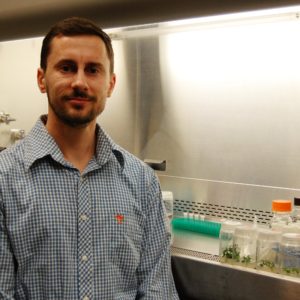
Jonathan Mahoney
Master’s student, University of Connecticut
Visiting Fellow, Arnold Arboretum of Harvard University
2016 Deland Award
- Mahoney JD, Brand MH. 2021. Pre- and postzygotic barriers associated with intergeneric hybridization between Aronia melanocarpa (Michx.) Elliott x Pyrus communis L. and ×Sorbaronia dippelii (Zabel) CK Schneid. x Pyrus communis. HortScience 56(2): 177-184. Abstract
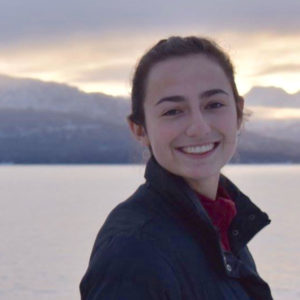
Juliet Bramante
Harvard University – 2018
2017 DaRin Butz Intern in the Hopkins Lab
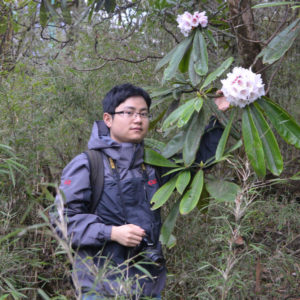
Meng Li
Ph.D student, Chengdu Institute of Biology, Chinese Academy of Sciences
Visiting Fellow, Arnold Arboretum of Harvard University
2016 Hu Award
- Li M, Ohi-Toma T, Gao Y-D, Xu B, Zhu Z-M, Ju W-B, Gao X-F. 2017. Molecular phylogenetics and historical biogeography of Sorbus sensu stricto (Rosaceae). Molecular Phylogenetics and Evolution 111: 76-86.

Rebecca Povilus
Graduate Student, OEB, Friedman Lab
Fellow of the Arnold Arboretum of Harvard University
Rob Baker
NSF Postdoctoral Fellow, University of Wyoming
Visiting Fellow, Arnold Arboretum of Harvard University
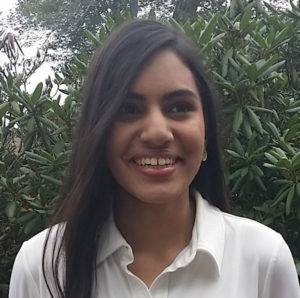
Sruti Pandey
Boston University – 2020
2017 DaRin Butz Intern in the Holbrook Lab
Sruti Pandey is an undergraduate student at Boston University studying biology. She worked with Dr. Losada in the Holbrook lab and quantitatively studied the vascular system of transgenic Nicotiana plants using confocal microscopy.
Sruti was an Alumni Mentor for 2021 Interns Jerry González-Cantoral and Aunnesha Bhowmick. She hosted a jeopardy game for 2021, 2022, and 2023 Interns.
After working as a research associate at a biotech company called Fluent BioSciences, Sruti is a PhD student at the University of Michigan.
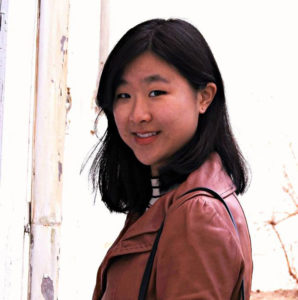
Vivien Chen
Boston University – 2019
2017 DaRin Butz Intern in the Holbrook, Templer and Hutyra Labs
- Hundertmark WJ, Lee M, Smith IA, Bang AHY, Chen V, Gately C, Templer PH, Hutyra LR. 2021. Influence of landscape management practices on urban greenhouse gas budgets. Carbon Balance Management.
2016

Chase Mason
2015-2016 Putnam Fellow
- De La Pascua DR, Smith‐Winterscheidt C, Dowell JA, Goolsby EW, Mason CM*. 2020. Evolutionary trade‐offs in the chemical defense of floral and fruit tissues across genus Cornus. Appl Plant Sci. 107(9):1260–73.
- Mason CM*, LaScaleia MC, De La Pascua DR, Monroe JG, Goolsby EW. 2020. Learning from dynamic traits: Seasonal shifts yield insights into ecophysiological trade-offs across scales from macroevolutionary to intraindividual. Int J Plant Sci. 181: 88-102.
Dan Flynn
Research Associate, OEB, Wolkovich Lab
Elisabeth Forrestel
Postdoctoral Fellow, OEB, Wolkovich Lab
Eric Goolsby
Postdoctoral Fellow, Yale University
Visiting Fellow, Arnold Arboretum of Harvard University
Grace Yu
Research Assistant, Friedman Lab
Jehane Samaha
Research Assistant, OEB, Wolkovich Lab
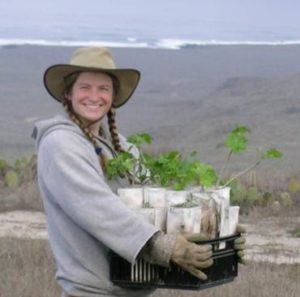
Jessica Savage
2014-2016 Putnam Fellow
- Savage JA*. 2019. A temporal shift in resource allocation facilitates flowering before leaf out and spring vessel maturation in precocious species. American Journal of Botany 106(1):113–22.
- Savage JA*, Beecher SD, Clerx L, Gersony JT, Knoblauch J, Losada JM, Jensen KH, Knoblauch M, Holbrook NM. 2017. Maintenance of carbohydrate transport in tall trees. Nature Plants 3: 965-972

Jorge Lora
Post-doctoral Fellow, Experimental Research Stations (CSIC), Spain
Visiting Fellow, Arnold Arboretum of Harvard University
2012 Jewett Prize
- Losada JM, Hormaza JI, Lora J. 2017. Pollen–pistil interaction in pawpaw (Asimina triloba), the northernmost species of the mainly tropical family Annonaceae. American Journal of Botany 104:1891–1903
Rubén Sancho
Graduate Student, University of Zaragosa
Tim Savas
Research Assistant, OEB, Wolkovich Lab
2015
Grey Monroe
Graduate Student, Colorado State University, Fort Collins
Marcela Serna
Graduate Student, National University of Colombia
Visiting Fellow, Arnold Arboretum of Harvard University
Stuart Graham
Erasmus Mundus Graduate Student, OEB, Hopkins Lab
2014
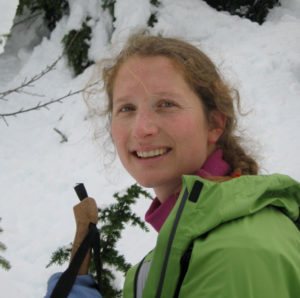
Ailene Ettinger
2014 Putnam Fellow
- Wolkovich EM, Chamberlain CJ, Buonaiuto DM, Ettinger AK, Morales-Castilla I. 2022. Integrating experiments to predict interactive cue effects on spring phenology with warming. New Phytologist 235: 1719-1728. Abstract
- Ettinger AK*, Buonaiuto DM, Chamberlain CJ, Morales-Castilla I, Wolkovich EM. 2021. Spatial and temporal shifts in photoperiod with climate change. New Phytologist 230: 462-474. Abstract
- Ettinger AK*, Chamberlain CJ, Morales-Castilla I, Buonaiuto DM, Flynn DFB, Savas T, Samaha JA, Wolkovich EM. 2020. Winter temperatures predominate in spring phenological responses to warming. Nature Climate Change.
- Ettinger AK*, Gee S, Wolkovich EM. Phenological sequences: how early-season events define those that follow. American Journal of Botany. 105: 1-1010(12):1137–42.

Andrew Groover
Geneticist, USDA Forest Service
Visiting Scholar, Arnold Arboretum of Harvard University
2014 Sargent Award
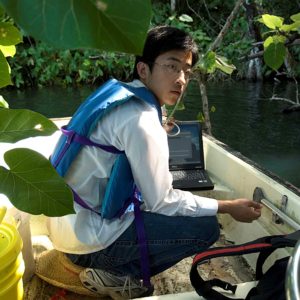
Guangyou Hao
2012-2014 Putnam Fellow
- Hao G-Y*, Lucero ME, Sanderson SC, Zacharias EH, Holbrook NM. 2013. Polyploidy enhances the occupation of heterogeneous environments through hydraulic related trade-offs in Atriplex canescens (Chenopodiaceae). New Phytologist 197: 970–8.
- Hao G-Y*, Wang A-Y, Sack L, Goldstein G, Cao K-F. 2013. Is hemiepiphytism an adaptation to high irradiance? Testing seedling responses to light levels and drought in hemiepiphytic and non-hemiepiphytic Ficus. Physiologia Plantarum 148: 74-86.
- Hao G-Y*, Wheeler JK, Holbrook NM, Goldstein G. 2013. Investigating xylem embolism formation, refilling and water storage in tree trunks using frequency domain reflectometry. Journal of Experimental Botany 64: 2321-2332.
Kate Morozova
Research Assistant, OEB, Friedman Lab
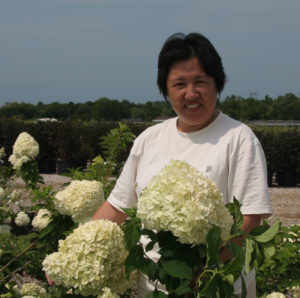
Ling Guo
Curator, Beijing Botanic Garden
Visiting Scholar, Arnold Arboretum of Harvard University
2014 Jewett Prize
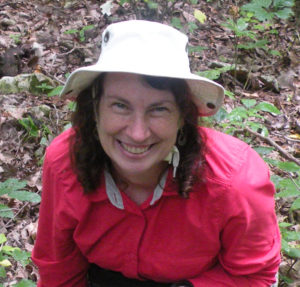
Rosanne Healy
Post-doctoral Fellow, University of Minnesota
Visiting Fellow, Arnold Arboretum of Harvard University
2013 Sargent Award
- Healy RA, Zurier H, Bonito G, Smith ME, Pfister DH. 2016. Mycorrhizal detection of native and non-native truffles in a historic arboretum and the discovery of a new North American species, Tuber arnoldianum sp. nov. Mycorrhiza 26: 781-792.
- Leicht-Young SA, Healy R, Del Tredici P. 2016. Observation of mycorrhizal colonization in roots in natural populations of Celastrus orbiculatus Thunb. The Journal of the Torrey Botanical Society 143: 322-324.
- Shao D, Tang S, Healy RA, Imerman PM, Schrunk DE, Rumbeiha WK. 2016. A novel orellanine containing mushroom Cortinarius armillatus. Toxicon 114: 65-74.
Ursula King
Graduate Student, University of Connecticut
Visiting Fellow, Arnold Arboretum of Harvard University
2013
Biao Jin
Associate Professor, Yangzhou University
Visiting Scholar, Arnold Arboretum of Harvard University

Cary Pirone
2011-2013 Putnam Fellow
- Prior N, Little SA, Boyes I, Griffith P, Husby C, Pirone-Davies C*, Stevenson DW, Tomlinson PB, von Aderkas P. 2019. Complex reproductive secretions occur in all extant gymnosperm lineages: a proteomic survey of gymnosperm pollination drops. Plant Reprod. 32: 153-166.
- Nepi M, Little S, Guarnieri M, Nocentini D, Prior N, Gill J, Barry Tomlinson P, Ickert-Bond SM, Pirone C*, Pacini E, von Aderkas P. 2017. Phylogenetic and functional signals in gymnosperm ovular secretions. Annals of Botany 120: 923-936.
- Pirone-Davies C*, Prior N, Von Aderkas P, Smith D, Hardie D, Friedman WE, Mathews S. 2016. Insights from the pollination drop proteome and the ovule transcriptome of Cephalotaxus at the time of pollination drop production. Annuals of Botany 117: 973-984.
- Prior N, Little SA, Pirone C*, Gill JE, Smith D, Han J, Hardie D, O’Leary SJB, Wagner RE, Cross T, Coulter A, Borchers C, Olafson RW, and von Aderkas P. 2013. Application of proteomics to the study of pollination drops. Applications in Plant Science 1: 1300008.

Iñaki Hormaza
Research Professor, La Mayora Experimental Station, Spain
Visiting Scholar, Arnold Arboretum of Harvard University

Jorge Lora
Post-doctoral Fellow, Experimental Research Stations (CSIC), Spain
Visiting Fellow, Arnold Arboretum of Harvard University
2012 Jewett Prize
- Losada JM, Hormaza JI, Lora J. 2017. Pollen–pistil interaction in pawpaw (Asimina triloba), the northernmost species of the mainly tropical family Annonaceae. American Journal of Botany 104:1891–1903
Julien Bachelier
Postdoctoral Fellow, OEB, Friedman Lab
Sarah Mathews
Sargent Fellow, Arnold Arboretum of Harvard University
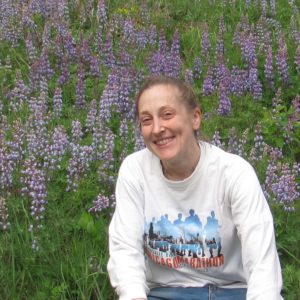
Stacey Leicht Young
2013 Putnam Fellow
- Leicht-Young SA*, Healy R, Del Tredici P. 2016. Observation of mycorrhizal colonization in roots in natural populations of Celastrus orbiculatus Thunb. The Journal of the Torrey Botanical Society 143: 322-324.
Stephanie Conway
Graduate Student, University of Melbourne, Australia
Visiting Fellow, Arnold Arboretum of Harvard University
2012
Elizabeth Ryan
Undergraduate Student, Brown University
Visiting Fellow, Arnold Arboretum of Harvard University
Erica Fadon
Graduate Student, Aula Dei Experimental Station–CSIC, Spain
Visiting Fellow, Arnold Arboretum of Harvard University
Francesca Secchi
Postdoctoral Fellow, AA, Zwieniecki Lab

Juan M. Losada
PhD Candidate, Aula Dei Experimental Station–CSIC, Spain
Visiting Fellow, Arnold Arboretum of Harvard University
2011 Deland Award
Maciej Zwieniecki
Sargent Fellow, Arnold Arboretum of Harvard University
Noeline Morrissey
Graduate Student, Harvard Extension School, Friedman Lab
2011

Brian Morgan
2010-2011 Putnam Fellow

Iñaki Hormaza
Research Professor, La Mayora Experimental Station, Spain
Visiting Scholar, Arnold Arboretum of Harvard University
2010
Abby Hird
2008-2010 Putnam Fellow
2009
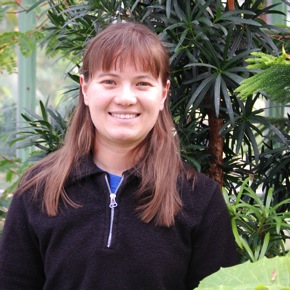
Jennifer Winther
2007-2009 Putnam Fellow
2007

Richard Primack
2006-2007 Putnam Fellow
2006
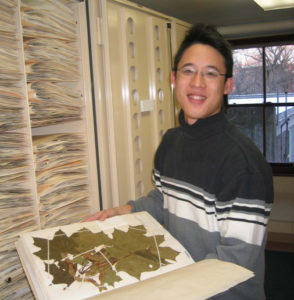
Eric Hsu
2005-2006 Putnam Fellow
2005

Nina Theis
2004-2005 Putnam Fellow
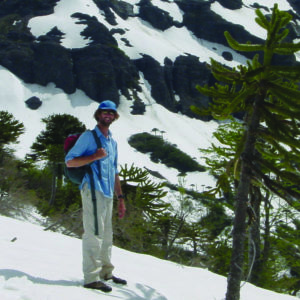
Tim Brodribb
2005 Putnam Fellow
2004
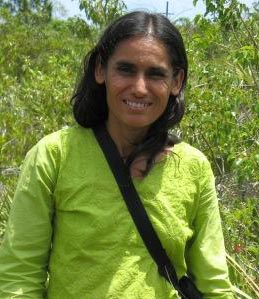
Sonali Saha
2002-2004 Putnam Fellow
2003

Lawren Sack
2002-2003 Putnam Fellow
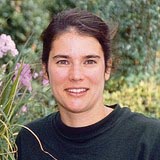
Sonia Uyterhoeven
2002-2003 Putnam Fellow
2002

Michael Dosmann
2000-2002 Putnam Fellow
Keeper of Living Collections
Arnold Arboretum of Harvard University

Youngdong Kim
2001-2002 Putnam Fellow
2001

Donglin Zhang
2001 Putnam Fellow
1999
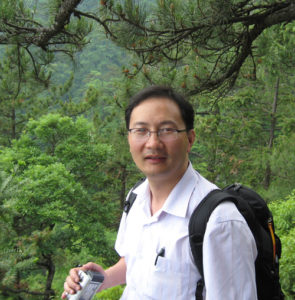
Jianhua Li
1998-1999 Putnam Fellow
1998
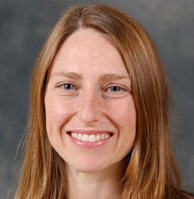
Katherine Gould Mathews
1997-1998 Putnam Fellow

Keiko Satoh
1997-1998 Putnam Fellow
1996
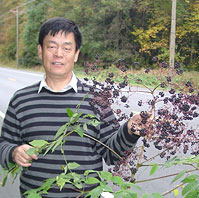
Jinshuang Ma
1995-1996 Putnam Fellow
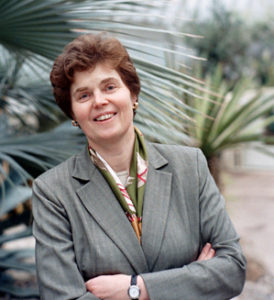
Kim Tripp
1994-1996 Putnam Fellow
1994
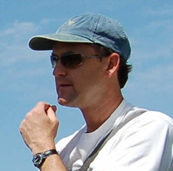
David Ackerly
1994 Putnam Fellow
1992

Jun Wen
1991-1992 Putnam Fellow
1991
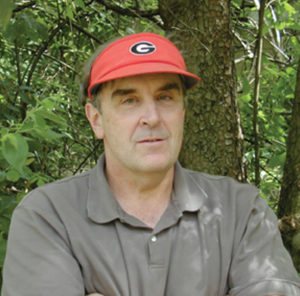
Michael Dirr
1991 Putnam Fellow
1990
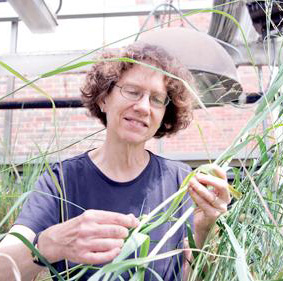
Elizabeth Kellogg
1989-1990 Putnam Fellow

Richard Schulhof
1989-1990 Putnam Fellow

Tokushiro Takaso
1988-1990 Putnam Fellow
1989

Jessica Gurevitch
1989 Putnam Fellow